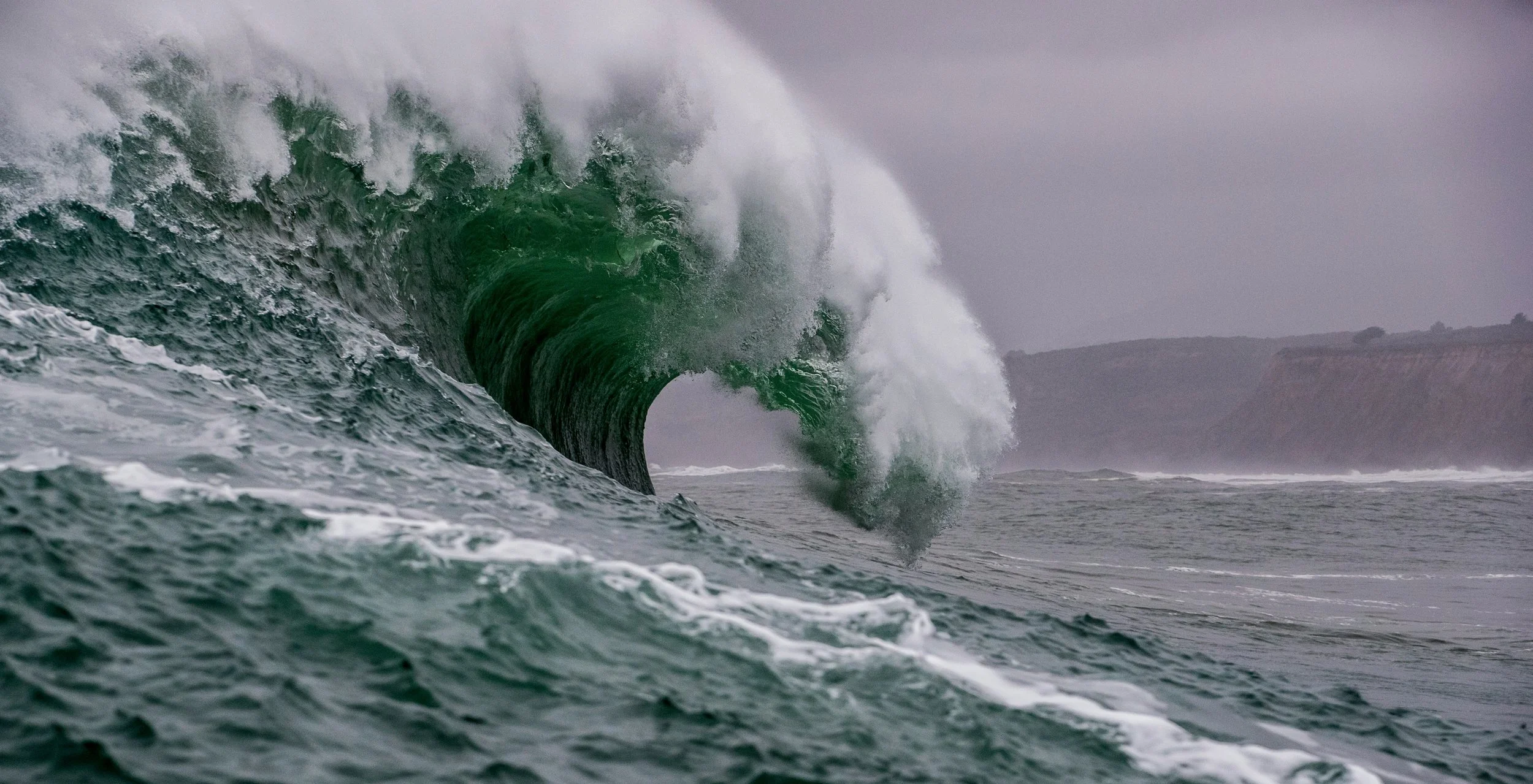
Tsunamis Hit Coastal Regions
Tsunamis Hit Coastal Regions
Written by: Sitara Nair
Earthquakes aren’t just local events, they can send massive waves across entire oceans, otherwise known as tsunamis! (Fun fact, earthquakes under the ocean are the leading cause of tsunamis in general!) Recently, on July 29, 2025, a staggering magnitude-8.8 quake struck off Russia’s Kamchatka Peninsula, releasing energy equivalent to hundreds of atomic bombs and automatically sparking tsunami warnings across the Pacific basin. Coastal communities from Japan down through Hawaii and the U.S. West Coast, from the California–Mexico border all the way up to British Columbia, were placed on high alert amid fears of walls of water exceeding 10 feet in height. Keep reading to learn what happened next and how you can stay safe!
To keep things simple, there are four key steps in the tsunami‐alert process you should know:
Detection & Warning: The National Tsunami Warning Center (NTWC) detects a significant seismic event and issues Tsunami Warnings for coastlines closest to the quake, after this event, Alaska and the Aleutians received the first alerts.
Advisory Spread: Next, Tsunami Advisories extend farther, covering the entire U.S. West Coast from the California–Mexico border up through British Columbia to inform residents of potentially hazardous currents.
Real‐Time Monitoring: Tide gauges and coastal sensors then record actual wave heights and send data back to NOAA, refining impact forecasts.
Downgrades & All‐Clear: Finally, as waves arrive and measurements confirm lower-than-expected heights, officials begin downgrading or canceling advisories to restore normal coastal access.
Once the first waves reached U.S. shores, the real numbers surprised many: California’s Arena Cove recorded a surge of about 4 feet, while smaller pulses of 1–2 feet rolled into Crescent City, Point Reyes, and Monterey. In Hawaii, beaches on Oahu and Maui saw waves between 4 and 5 feet, enough to toss debris and produce strong currents but far below the worst-case forecasts. Despite the moderate heights, experts stress that even modest tsunamis can generate powerful rip currents capable of sweeping people and vessels out to sea, so you should always stay clear of beaches and marinas until an official all-clear is given.
Interestingly, this massive quake didn’t spawn the colossal tsunami many feared. Scientists attribute the relatively mild swell in distant locations to the absence of an accompanying underwater landslide and specific characteristics of the fault’s movement, which limited energy transfer to the ocean floor. Improved seismic and ocean‐monitoring networks also provided faster travel‐time estimates and more accurate wave models, giving coastal communities extra lead time to evacuate safely. Near the epicenter, some areas still recorded waves up to 15–50 feet, but far-flung coastlines experienced a much calmer outcome overall.
By the morning of July 30, officials began clearing alerts: Southern California’s advisory was fully canceled, while Oregon and Washington lifted theirs by mid-morning. However, parts of Northern California, from Rincon Point north to the Humboldt/Del Norte county line, remained under advisory, with warnings still in effect northward to the Oregon border. Authorities remind you that tsunamis often arrive in multiple waves over several hours, so don’t assume you’re safe just because the first wave was small.
Right now, most West Coast tsunami alerts are gone, but if you’re anywhere north of Rincon Point, stick to higher ground until your local emergency management officials lift the advisory. For the latest bulletins and evacuation instructions, tune into NOAA Weather Radio, follow official social media channels, or visit tsunami.gov. Remember: when a tsunami advisory or warning is active, the safest move is to head inland or climb to higher ground, no beach outing is worth risking your life or the lives of loved ones!
References
Associated Press. “Chile Raises Its Tsunami Warning to Highest Level for Most of Pacific Coast.” AP News, July 30, 2025. https://apnews.com/live/japan-earthquake-tsunami-alert.
Associated Press. “Russia’s Pacific Coast Largely Spared by Strong Earthquake and Tsunami.” AP News, July 30, 2025. https://apnews.com/article/russia-pacific-earthquake-tsunami-kamchatka-kurils-d13f56519182de7a09bea5ae2488b3bf.
Associated Press. “Tsunami Warnings Fade after One of the Largest Earthquakes Ever Recorded.” AP News, July 30, 2025. https://apnews.com/article/pacific-tsunami-warning-evacuation-4bf4cda5efc9dcc7bfdff736abf0f3af.
KSBW. “Worst Tsunami Risk Appears to Pass for U.S. after Huge Quake.” KSBW, July 30, 2025. https://www.ksbw.com/article/japan-earthquake-kamchatka-tsunami-advisory/65545428.
NBC Universal, Inc. “Tsunami Waves Hit Hawaii, California after 8.8-Magnitude Quake off Russia’s Kamchatka Peninsula.” NBC Bay Area, July 30, 2025. https://www.nbcbayarea.com/news/national-international/powerful-quake-hits-near-russias-kamchatka-peninsula-tsunami-watch-in-effect-along-u-s-west-coast/3925240/.
Patel, Kasha, and Scott Dance. “Why One of the World’s Biggest Earthquakes Wasn’t Followed by a Monster Tsunami.” The Washington Post, July 30, 2025. https://www.washingtonpost.com/climate-environment/2025/07/30/tsunami-russia-earthquake-impacts-hawaii-california/.
